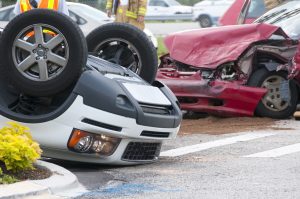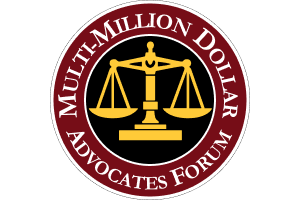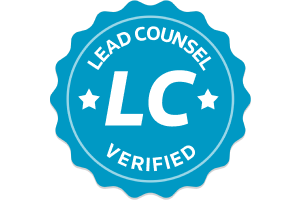- Free Consultation: 866-966-5240 Tap Here To Call Us
Car Accidents Kill More People Than Guns Every Year

While gun-related deaths are a serious problem in California and the rest of the U.S., traffic accidents cause just as many deaths as guns each year. When you get behind the wheel of your vehicle, it is among the most dangerous things you might do on any given day. Car accidents kill tens of thousands of people in the U.S. each year and cause millions of others to suffer serious injuries.
Even though people have clocked fewer miles during the pandemic, traffic fatalities have increased in the last 18 months. According to the National Safety Council, an estimated 42,060 people were killed during 2020, which was a 24% increase from traffic fatalities in 2019. By comparison, USA Today reports that 41,000 Americans were killed in gun-related incidents in 2020, meaning that more people were killed in traffic accidents than in gun incidents.
Even though fewer people were on the roads in 2020 because of the pandemic, traffic deaths still surged. This surge in traffic fatalities has continued during 2021 even though more people are back on the roads. Policy changes should be implemented to reduce traffic deaths.
Pedestrian and Cyclist Fatalities in Urban Areas
A major step to reducing deaths in car accidents would be for the government to take steps to prevent pedestrian and cyclist fatalities, particularly in urban environments like Los Angeles. Pedestrian fatalities make up a disproportionate share of all traffic fatalities in LA each year. For example, in 2019, 246 people were killed in traffic accidents in the city. Out of that total, 134 pedestrians were killed, representing more than 55% of all traffic fatalities in the city that year. The problem is especially pronounced in South Los Angeles where large minority communities live and work. More people in those neighborhoods tend to walk to stores and work, and the city has devoted little infrastructure investments and planning to these neighborhoods. In a policy brief from the the University of California, Los Angeles Lewis Center for Policy Studies, researchers reported that Black people in California accounted for 14% of all traffic fatalities between 2013 and 2017 even though they only make up 9% of the city’s total population.
According to the National Safety Council, an estimated 7,700 pedestrians in the U.S. were killed in 2019, which was a significant increase from the number of pedestrians killed in 2009 at 4,109. Busy, wide thoroughfares with little pedestrian infrastructure in LA can result in many pedestrian fatalities, and the structural inequities present in lower-income neighborhoods result in even more deaths.
Similarly, LA also has a problem with cyclist fatalities. In 2019, 36 bicyclists lost their lives in traffic collisions. While the number is not nearly as high as the number of pedestrians killed in the city, a similar underlying problem leads to cyclist fatalities. The city simply does not have good infrastructure in place for cyclists or pedestrians, forcing them to share roads with cars moving at high speed limits.
Problems with Road Design
In both Los Angeles and across the U.S., one major problem is that roads have been designed to allow people to speed. In most car accidents, how fast the vehicles are traveling at the time of the collisions is the deciding factor in how severe the accidents are. While other factors, including impairment by alcohol or drugs, bad weather, distracted driving, and drowsy driving all increase the likelihood of collisions, speed can make the difference between life and death. For example, a pedestrian who is hit by a car moving at 23 miles per hour has a 10% chance of being killed. By contrast, if the vehicle is traveling at 50 miles per hour, the chance of death increases to 75%.
Another common problem in road design is the creation of wide roads with high speed limits that also have frequent stops and people entering and exiting parking lots for shopping at stores. These types of busy roads, which also combine shared traffic with pedestrians and cyclists, increase the risks of accidents and are found throughout LA.
Ways to Address Traffic Fatalities
There are several ways that the local, state, and federal government could help to reduce traffic fatalities. However, each change would require the government to be willing to move forward in the face of resistance from motorists.
1. Reducing Speed Limits
One effective way that the government could help to reduce traffic fatalities is to reduce speed limits, especially in urban environments. However, in car-depending cities like LA, lowering the speed limits on city streets would likely be met with stiff resistance from motorists.
2. Adding Traffic-Calming Measures
Cities could also narrow some of the traffic lanes and add speed bumps to encourage people to slow down. Installing roundabouts in place of traditional intersections can also help to reduce traffic fatalities since people are forced to slow down to proceed through them. Adding physical barriers between lanes can also help to reduce collisions and fatalities.
3. Adding Pedestrian and Cyclist Infrastructure and Reconfiguring Lanes
Between 2014 and 2019, Fortaleza, Brazil, a city with a population of 2.7 million people, halved its traffic fatalities by doing several things. The city narrowed its lanes, lowered its speed limits, and added features like raised pedestrian crossings. Adding traffic cameras for enforcement of speed limits can also be effective because they incentivize drivers to comply with the traffic laws.
In Oslo, Norway, traffic fatalities were nearly totally eliminated by several changes that the city made. It lowered speed limits and turned its city center into a pedestrian area, banning cars. It also built a robust network of bicycle paths. Having vehicle-free zones combined with slow speeds in urban areas can help to prevent traffic deaths.
4. Overcoming Policy Challenges
Like many other cities, Los Angeles has a Vision Zero program. Despite this program, which envisions increasing road safety to the point of attaining zero traffic deaths, traffic fatalities have only increased. Many U.S. cities that also have Vision Zero programs in place have only shown limited success.
One of the main problems with implementing sound policies is opposition from local motorists. Drivers fiercely oppose changes that they view as increasing their inconvenience. Local governments have also been impeded by state laws in many cases. Before a local government can change its traffic laws, it must first navigate many state and federal rules and the funding that is tied to them.
For example, a New York law prevents cities in the state from having speed limits lower than 25 miles per hour. In New York City, the speed limits should be lower in areas in which streets are shared with a large number of cyclists and pedestrians. A bill pending in the New York legislature would allow New York City to reduce its speed limits in certain areas below 25 mph, but it is unclear whether or not it will pass.
In Los Angeles, the city sets its speed limits based on the assessment of traffic engineers on how fast a certain percentage of traffic is traveling rather than on safety outcomes. This has led to the city regularly increasing speed limits throughout the city. The state also had set a prima facie minimum speed limit of 25 miles per hour. Assembly Bill 43 passed the state legislature and was presented to Governor Newsom on Sept. 17, 2021. If signed into law, this bill will allow cities, including LA, to reduce speed limits in specific areas to 15 miles per hour.
Another potential idea would be to penalize states at the federal level for having increasing car accident rates. Federal standards for states are not ambitious, and they also make it difficult for local communities to make smart design changes. For example, narrowing lanes and reducing speed limits would help to reduce traffic crashes and deaths. However, states and cities are not allowed to do that for highways and freeways because they could lose federal highway funding.
Not following federal rules that emphasize speed over safety could also force local governments to be liable in traffic collisions. This incentivizes cities and states to follow federal standards even though they do not help to keep people safe. While penalizing states and cities with increasing fatality rates could be effective, it would only work if cities and states were allowed to deviate from the federal standards without risking funding loss and if the federal government changed its standards to prioritize safety.
Talk to an Experienced Injury Lawyer
If you have suffered serious injuries in a collision in Los Angeles or have lost your loved one because of the negligence of someone else, you should schedule a consultation with an experienced attorney at the Steven M. Sweat, Personal Injury Lawyers APC. Call us today at 866.966.5240.












